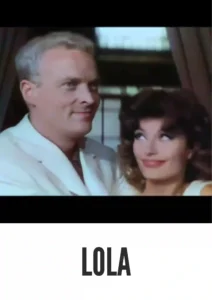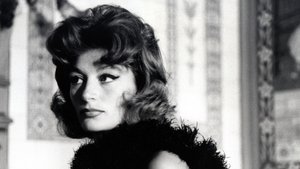Video Sources 0 Views

Synopsis

Step into the enchanting world of French New Wave cinema with Lola, a captivating romantic drama from 1961, now beautifully colorized for a viewing experience like never before. This film, written and directed by Jacques Demy in his feature directorial debut, stars Anouk Aimée as the titular character and delivers a heartfelt blend of romance, and longing within the vibrant setting of Nantes.1 Perfect for classic film enthusiasts and those seeking a taste of Demy’s early genius, this HD download brings a lesser-known but intriguing piece of cinematic history to your screen.
Lola is a tribute to director Max Ophüls, described by Demy as a “musical without music”1. The names of the film and title character were inspired by Josef von Sternberg’s 1930 film The Blue Angel, in which Marlene Dietrich played a burlesque performer named Lola Lola1.
In the seaside French town of Nantes, a young man, Roland Cassard, is wasting his life away until he has a chance encounter with Lola, a woman he knew as a teenager before World War II, who is now a cabaret dancer123. Although Roland is quite smitten with her, Lola is preoccupied with her former lover Michel, who abandoned her after impregnating her seven years earlier13. Also vying for Lola’s heart is American sailor Frankie, whose affection Lola does not return1.
Struggling for work, Roland gets involved in a diamond-smuggling plot with a local barber13. Cécile, a 13-year-old girl, crosses paths with Roland; in many ways she reminds him of Lola, whose real name is also Cécile1. In the end, Michel returns to Nantes, apparently very successful and hoping to marry Lola, just as she is leaving for another job in Marseille1. She goes away with Michel as she always said she would1.
The film features a talented cast of actors who bring this romantic story to life:
-
Anouk Aimée as Lola
-
Marc Michel as Roland Cassard
-
Jacques Harden as Michel
-
Alan Scott as Frankie
-
Annie Duperoux as Cécile
Lola falls into the genre of romantic drama, with elements of French New Wave cinema that are characteristic of Jacques Demy’s early work. Its intricate plot and atmospheric setting make it a captivating and engaging film.
Released in 1961, Lola represents an early stage in Jacques Demy’s illustrious career, showcasing his developing skills in visual storytelling, and character development. The film was produced during a period when French cinema was beginning to gain international recognition as the French New Wave. Lola offers valuable insights into his artistic evolution and his early experimentation with genre conventions.
This colorized version of Lola has been meticulously restored using modern digital techniques, enhancing the visual appeal while preserving the film’s original atmosphere of romance and longing. The colorization process involved carefully analyzing the grayscale tones of the original black and white footage and assigning appropriate colors to each scene5. The technician selects a color for each object based on common “memory” colors—such as blue sky, white clouds, flesh tones, and green grass—and on any information about colors used in the movie9. If color publicity stills or props are available to examine, authentic colors may be applied9. While the specific software used remains proprietary, the techniques employed included advanced algorithms for color palette selection and image enhancement6. This painstaking process brings new life to the characters and settings, making the story even more engaging for modern audiences. While some may debate the merits of colorizing classic films, it introduces these films to a broader audience, ensuring their legacy for future generations5.
The history of film colorization began at the start of the 20th century4. The process back then took a lot of time, as artists hand-colored copies of movies frame by frame4. One of those artists was Elizabeth Thullier, a French colorist who ran a coloring lab in Paris4. She and her 200 employees would paint every single object in every single frame of a movie4. They used aniline dyes dissolved in water and alcohol4. Artists used four main colors: magenta, bright yellow, orange and blue-green4. By mixing them in various combinations, they could produce more than 20 unique colors and hues4.
Computerized colorization began in the 1970s using the technique invented by Wilson Markle9. To perform digital colorization, a digitized copy of the best black and white film print available is used9.
-
: Jacques Demy1
-
: Raoul Coutard
-
: Anne-Marie Cotret
-
: Compagnie Cinématographique de France
-
: Films Around the World
-
: 90 minutes
-
: MP4
-
: HD (1080p)
-
: Compatible with most devices, including smartphones, tablets, computers, and smart TVs.
Lola is often seen as a foundational work in Jacques Demy’s career, offering glimpses of his developing style and themes8. It remains a fascinating and entertaining example of early French New Wave cinema and a valuable piece for Demy enthusiasts. As a relatively obscure but intriguing film, Lola provides a unique perspective on the formative years of a cinematic genius.
-
: What is Lola about?
-
A: Lola is a romantic drama about a cabaret dancer in Nantes and the people who love her.
-
-
: Is Lola (1961) a well-known Demy film?
-
A: Lola is one of Demy’s earlier works, offering a glimpse into his early style and themes.
-
-
: Is this version of Lola colorized?
-
A: Yes, this version has been professionally colorized to enhance the viewing experience.
-
-
: What makes Lola interesting for Demy fans?
-
A: Lola offers valuable insights into Jacques Demy’s early career, showcasing his developing skills in visual storytelling.
-
-
: What is the download format?
-
A: The download format is MP4, which is compatible with most devices.
-
-
: What resolution is the download?
-
A: The resolution is HD (1080p), providing a high-quality viewing experience.
-
Watch Lola Today!











